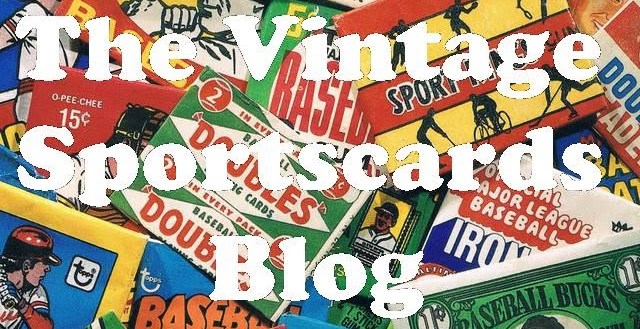(This text has been largely swiped from this Web page about the set, but I wrote that also.)
1941 was the last of the run of "Play Ball" sets issued by Gum, Inc. before the second World War halted production of new baseball card sets for seven years. This was a smaller set than either the 1939 or 1940 Play Ball issues, having only 72 total cards.
Just as they had done in 1940, Gum, Inc. improved upon their previous design. The 1941 Play Ball set was, in some ways, a colorized version of its 1940 set but without the baseball gear. Many of the players' cards featured the same picture shown on their 1940 cards, only with color added. Beneath the picture, there was a banner with the player's name (often with his nickname in quotes) that stretched across the card.
Here's an example of a card from the set:
Card #26 -- Harry "Gunboat" Gumpert, New York Giants
This card is a sentimental favorite, as one of the readers of my old newsletter was the nephew of Harry Gumbert and sent me an email once about playing catch in the backyard with "Uncle Harry." That must have been an awesome memory.
The card backs, like all Play Ball issues, featured a lengthy biography; there is no copyright date, however. At the very bottom of most cards in the set is a caption: "Watch for other famous sports stars, famous fighters, tennis players, football heroes, etc. in this series." The set seems to have been intended as part of a larger "Sports Hall of Fame" set, but the other cards never surfaced. The cards that are missing that caption feature an advertisement for Blony gum.
And here's what the back of Gumbert's card looks like:
Having color on the cards wasn't the only thing that makes these cards stand out, it's the way that color was used: backgrounds are vivid and sometimes multi-colored, shadows and perspective are shown. For some, the look was too much like comic book art and just needed the captions of 1938 Goudeys, for others, it was the best work on cards since the Art Deco that marked Diamond Stars cards in the mid 1930s. In any case, it was bold.
The key cards in this issue feature Ted Williams and Joe DiMaggio, both of whom had memorable seasons in 1941 (DiMaggio had a record 56-game hitting streak and Williams batted .406; no other player has since reached .400). This set is notable as the only issue featuring all three DiMaggio brothers, and a rookie-year card of Hall of Fame shortstop Pee Wee Reese can be found here as well. Of the three Play Ball sets, this one is probably the easiest to complete due to its small size.
This would be the last major baseball card set for the next seven years, as card production was halted when the United States entered World War II. Not only were the paper, cardboard, and printing supplies were needed for the war effort, so were the players; DiMaggio, Williams, Charley Gehringer, Bob Feller, Pee Wee Reese, and many other players left the league and joined the military to do their part. By 1948, Gum, Inc. (which by that time would be renamed Bowman) would begin a new era of collectible baseball cards.
Play Ball cards were issued in four wrappers. The design was the same, but the colors were different. They came in green:
orange:
red:
and yellow:
As you can see from the wrappers, a penny bought two cards and a piece of gum.




































































